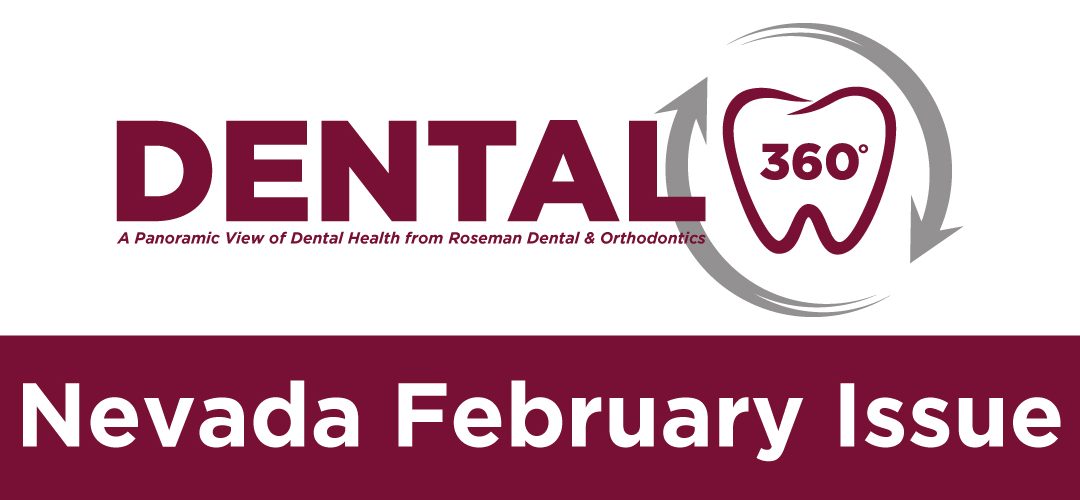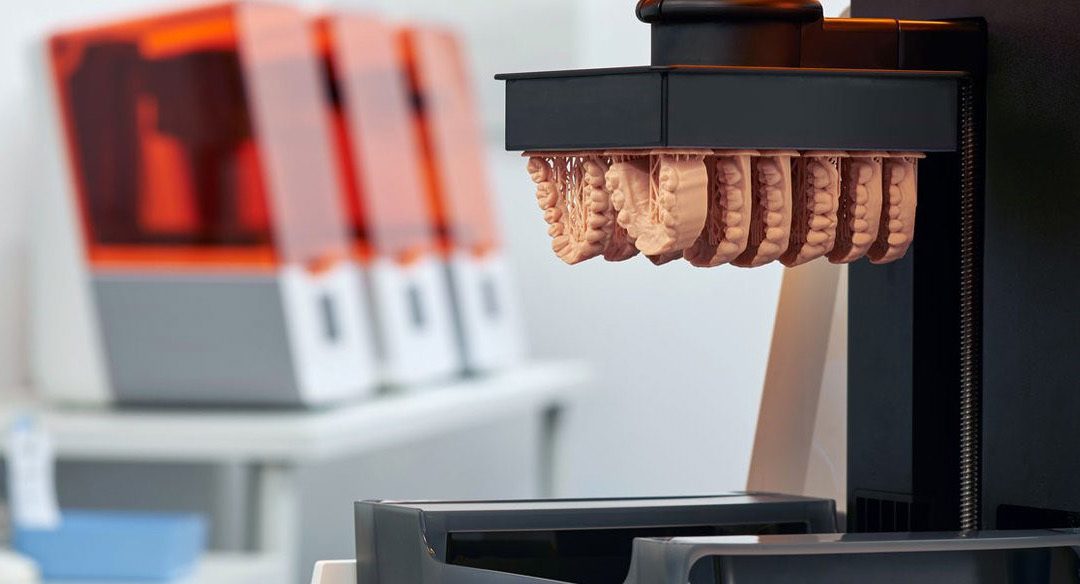
by Roseman Dental | Mar 7, 2022 | Dental Clinic Blog, Oral Health, Roseman Dental - NV, Roseman Dental - UT
Keeping up with your oral health is a daily task. It may be tempting not to take the time for regular dental maintenance, whether at home or at the dentist’s office. However, like so much in life, slacking on dental hygiene doesn’t pay.
Routine Home Cleanings
Brush or floss after every meal, or at least twice a day, to ensure the health of your teeth and gums, you should brush and floss after each meal. Flossing removes bits of food that toothbrushes may not be able to reach. If these pieces of food aren’t removed, they provide nourishment for bacteria, which excrete acid that destroys tooth enamel and causes cavities.
Flossing and brushing also gets rid of plaque, a sticky substance that can cause gum disease, tooth discoloration, and even tooth decay. Plaque that isn’t removed can harden into tartar, which can then lead to gingivitis and periodontal disease. Fortunately, most of these problems can be prevented with a simple routine of brushing and flossing regularly.
Regular Dental Checkups
Almost half of Americans put off regular dental care or previously planned treatment during the COVID-19 pandemic. As we enter a new stage of the pandemic, made more manageable with vaccines and boosters readily available, it’s time to re-book those postponed check-ups and procedures.
In addition to good dental hygiene at home, make sure to visit the dentist twice a year, or about every six months. The dentist will check for cavities and treat them before they become serious. He or she will also scrape away tartar and plaque buildup, and can treat gingivitis before it becomes full-blown gum disease. Visiting the dentist regularly is crucial to maintaining a beautiful smile for years to come.
Reduced Costs
Aside from the medical benefits of regular dental care, there are financial reasons to keep at it as well. Many insurance plans will pay for most or all of the price of regular dental appointments, but may cover less of the cost for more expensive procedures. For instance, while most patients with insurance pay around 20 percent of their exam fee and the price of getting a cavity filled, they could pay 50 percent of the cost of root canals, crowns or bridges. These procedures can sometimes be avoided with preventive care that finds the problem early and provides treatment. By structuring their payment schedules this way, insurance companies financially incentivize their patients to prevent dental problems rather than repair them after they become more serious. Take advantage of this structure by getting regular cleanings and check-ups.
As the saying goes, “An ounce of prevention is worth a pound of cure.” Apply this maxim to your oral health, and save yourself pain and money. If it’s been awhile, make an appointment with Roseman Dental and set yourself up for better dental health.

by Roseman Dental | Mar 6, 2022 | Dental Clinic Blog, Oral Health, Roseman Dental - NV, Roseman Dental - UT
Pregnancy is an exciting time full of preparations for a new little one. It’s also a time when the body goes through countless changes from top to bottom. Most mothers-to-be notice the most obvious changes, ranging from weight gain to thicker hair. What they may not realize is that hormone shifts caused by pregnancy can impact their dental health. In fact, many women are shocked when their dentist finds multiple cavities following the birth of their child. Good periodontal health is essential while pregnant for the health of both moms and babies.
Greater Risk for Pre-Term Birth
Periodontal disease can cause infections, which can increase the levels of biological fluids that induce labor. Neglecting to adequately care for your teeth and gums during pregnancy can raise the risk of delivering before the 37-week mark. Preterm delivery can be dangerous for babies, as they may not yet be fully developed. These low-birth-weight babies are at risk for developmental delays and may even spend significant time in a neonatal intensive care unit following their entry into the world.
The Impact of Periodontal Disease
Nearly every pregnant woman deals with sore, swollen and bleeding gums, commonly known as “pregnancy gingivitis.” Proper oral hygiene is necessary to stop the issue from getting worse. Once gingivitis progresses into periodontal disease, it’s possible to become susceptible to other health concerns, including:
- Tooth loss
- Cardiovascular disease
- Diabetes
When brushing your teeth, make sure to focus the efforts around the gum line to get rid of plaque and bacterial build up. Flossing is an important part of a daily dental care routine too.
Women’s bodies sacrifice many nutrients as they work to grow tiny humans, which can leave the mouth without protection against bacteria. Regular dental check-ups and cleanings can keep moms on the right healthy path as they get ready to welcome new life.

by Roseman Dental | Feb 9, 2022 | Dental 360, Dental Clinic Blog, Roseman Dental - NV
Spring and warmer weather are almost here! In this February issue of Dental 360°, you’ll get some tips about the right way to floss, learn how 3D printing is revolutionizing orthodontic treatment, and pick up a few teeth-friendly sugar swaps for all those Valentine’s Day goodies. And don’t miss special information about National Children’s Dental Health Month! As a bonus, take a look at what Roseman University is doing in the world of essential oils.
Roseman Dental & Orthodontics’ Dental 360° is a monthly e-newsletter. Each month you’ll receive a panoramic view of dental health. Dental health is key to your overall health and here at Roseman Dental & Orthodontics, we are dedicated to improving not only your mouth, but your whole self. At our clinic we have an excellent team of licensed dentists, orthodontists, orthodontic residents – 30 to be exact, and dental residents all focused on you and your family’s oral health. Roseman Dental & Orthodontics has been serving its community since 2009 and is a comprehensive, one-stop shop for all your dental needs including dental, orthodontic and craniofacial cleft lip & palate treatment.
We hope you find Dental 360° helpful and informative. We look forward to connecting with you each month.
Dental 360° February Articles
How to Floss Properly
3D Printing at Roseman Dental & Orthodontics
Safe-for-Your-Teeth Treats
National Children’s Dental Health Month
Understanding Nutraceuticals: Unlocking the Power of Essential Oils
Subscribe to e-newsletter

Click Here to Leave a Review

by Roseman Dental | Feb 9, 2022 | Dental Clinic Blog, Oral Health, Roseman Dental - NV
3D printing technology is making orthodontic treatment quicker and more cost-effective than ever before.
Roseman Dental & Orthodontics has been working with 3D printing for the better part of a decade. Seven years ago, the providers embarked on their first 3D printing expedition – not to immediately create something for clinical use, but rather to discover what the technology, first developed in 1984, could do. It was an exploratory foray that’s exploded into an extremely beneficial resource for residents and patients alike.
Having dental impressions taken can be an uncomfortable and goopy mess. That’s not the case when aligners and retainers are being 3D printed. An intraoral scanner creates a 3D model of the teeth. The model is then directly imported into software that creates a model of the teeth in the proper position. From there, aligners and retainers can be printed and put into use quickly.
3D printing eliminates a long waiting period for patients. Traditionally, orthodontists have sent materials back and forth with external companies. According to Dr. Glen Roberson, director of Roseman University’s Orthodontic Clinic, the time between a patient coming in and receiving their trays could be as long as six weeks. Now, Dr. Roberson can see a patient and have their first trays made the same day, shortening the waiting period from over a month into just 24 hours.
The speed doesn’t stop there. 3D printing allows for faster, easier alterations to future trays. If the process is tracking well for a patient, they can proceed as planned. If not, they can make immediate changes. It’s a continuous and gradual development based on individual patient needs.
Cost is a notable component of orthodontic care, often acting as a barrier to access. 3D printing can significantly lower the financial impact. Because the whole process is done right at Roseman’s orthodontic clinic, it eliminates third party expenses and allows for more variable treatment fees. Plus, it cuts some expenses altogether – for example, if a patient loses their retainer, a replacement can quickly be created at little to no cost.
On the administrative side, 3D printing saves space while protecting patient privacy. Because models of teeth are medical records, they must be stored securely and for a long time. Keeping them as a computer file instead of physical material is an efficient way to protect patient privacy. Years of models can be safely stored virtually. As a bonus, since no physical models need to be disposed of, this digitization also benefits the environment.
The providers and residents at Roseman Dental & Orthodontics are continuing to implement new ways that 3D printing can help their patients. If your smile needs some attention, schedule a screening and consultation today.

by Roseman Dental | Feb 8, 2022 | Dental Clinic Blog, Oral Health, Roseman Dental - NV, Roseman Dental - UT
Your dentist tells you that you need to floss, and it may sound easy enough, but did you know that many people are flossing incorrectly?
There’s more to flossing than you might think. Millions of Americans don’t floss daily. Skipping this step can cause serious dental problems. And flossing incorrectly is a waste of time. The good news is that there is help. The following steps will walk you through the correct and proper way to floss your teeth each day.
- You should floss at least once every day, twice if you can. The perfect time is morning and night when you brush your teeth. If you have something stuck between your teeth, floss immediately to remove it, rather than waiting.
- Use about 18 inches of floss. For an average person, that will stretch from your fingertips to about your elbow. Starting on one end of the floss, wrap it around each of your middle fingers, with about an inch or two of floss running between the two middle fingers. Pull the floss taut with your index fingers and thumbs on each hand.
- Gently slide the floss up, back and forth between each of your teeth. Be sure to follow the curve of each tooth, extending the floss beneath the gum line. This will pull out any food or buildup that may be caught underneath. Be careful not to force the floss or snap it against your gums, as this can cause pain or even bleeding. Just keep it gentle and smooth at all times.
- As you move to the next tooth, unwind the floss from one middle finger, and wrap the used portion of floss around the other middle finger. This ensures that a clean section of floss is used each time.
- When removing the floss from between the teeth, gently slide it back and forth while pulling it down and out from between the teeth.
If you have not flossed in quite a while, the first couple of times you floss it may cause a small amount of bleeding or pain in your gums. If the bleeding or pain is excessive, be sure to contact your dentist before you continue. If you remember to floss daily, the pain and bleeding should subside within a few days.
There are two main types of floss to choose from: nylon waxed and wide polytetrafluoroethylene (PTFE). Studies have shown that both kinds are equally effective at removing plaque, food particles and bacteria from teeth and gums. Interestingly, a recent study found that 75 percent of adults indicated a preference for PTFE floss over nylon after using each type for five weeks in a row. By following these simple steps, you can do your part to maintain good oral hygiene in your mouth. No matter what time of day you do it, or what kind of floss you use, flossing is an important part of your daily hygiene routine and should always be done properly.

by Roseman Dental | Feb 8, 2022 | Dental Clinic Blog, Oral Health, Roseman Dental - NV, Roseman Dental - UT
February is National Children’s Dental Health Month (NCDHM), brought to you by the American Dental Association. This month’s national health observance brings thousands of dedicated professionals, health care providers and educators together to promote the benefits of good oral health to children, their caregivers, teachers and many others.
NCDHM was started in 1941 in Cleveland, OH and Akron, OH as just a day-long event. The two cities joined forces and held the first national program in 1949. By 1981, the event had become a month-long celebration. Educators and parents can find fun online resources for children, including posters, coloring sheets and crossword activities.
Children’s oral health is examined extensively in the recently published NIH report Oral Health in America. The report sheds light on how various populations in the US experience oral health differently, based on their age, economic status, and their other social determinants of health. Oral health is central to overall health, yet has not been equitably available across the country. Extraordinary advances have been made with technology and in new materials, expanding solutions to more patients. Craniofacial birth defects, in particular cleft lip and palate, occur as often as one in 700 live births and now represents the most common congenital disorder after Down syndrome. Read more about Oral Health in this groundbreaking report.
Also register for Roseman’s February 17 NHS event given by Dr. Glen Roberson, “Improving Nevada’s Dental Health Outcomes Among Children – One Smile At A Time.” Be sure to share Roseman Dental’s voucher program (February 7-March 7) offering new and existing patients in Utah the opportunity for a free exam and x-ray. We wish all children the opportunity for a healthy smile.









